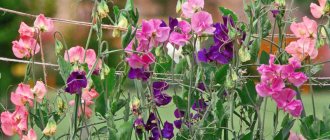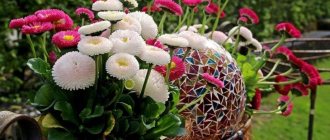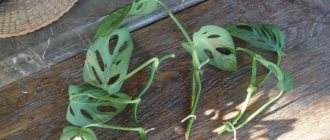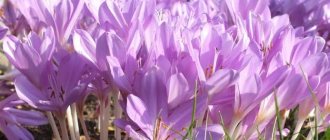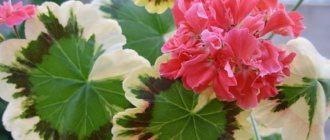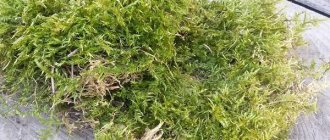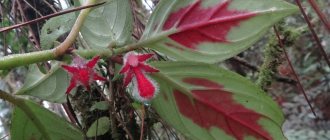The beautifully flowering sprekelia plant, also called sprekelia, stands out for its spectacular, graceful flowers. This evergreen bulbous plant is a member of the Amaryllis family. This genus unites only two species, namely: the magnificent sprekelia (Sprekelia howardii) and the most beautiful (Sprekelia formosissima).
This plant is also popularly called the Aztec lily. It is native to Guatemala and Mexico, and began to be grown in European countries in 1593. An adult bush reaches a height of approximately 30–35 centimeters. Flowering begins in the spring months or June. At this time, a peduncle appears on the bush, at the top of which a beautiful graceful flower opens.
When the bush fades, the plant must be provided with a period of rest. In indoor culture, the lifespan of such a flower is from 4 to 5 years. It has an average growth rate and is a perennial.
Botanical description of the Sprekelia flower
Sprekelia is a representative of the American continent, its homeland is Mexico and Guatemala. The plant was introduced to Europe in 1568 and was first described and named by Swedish botanist Carl Linnaeus as Amaryllis formosissima. Later, in 1821, the British botanist William Herbert renamed the flower in honor of J. H. von Spreckelson, a German lawyer and gardener. In everyday life, this flower has a more refined, romantic name. It is often called the Templar Lily or the Aztec Lily.
Sprekelia Karwinskii
Sprekelia is a member of the Amaryllidaceae family. Sprekelia is a bulbous plant 30 centimeters high. An adult bulb can reach ten centimeters in diameter. The leaves of the flower are rich green in color with a shiny surface, have a narrow, lanceolate shape and can grow up to 60 cm.
Although early summer is the time for these beautiful red flowers to bloom, they can sometimes bloom at other times of the year if Sprequelia is grown in a greenhouse or as a houseplant. With good care it can bloom again in early autumn. During flowering, a smooth, reddish-brown peduncle appears, growing to about thirty centimeters. The peduncle is crowned with a very large, asymmetrical flower.
Six long petals curl ornately, forming an interesting flower shape. Petals can be different shades of red. Many long, delicate stamens are crowned with yellow, bright pollen. Sprekelia exudes a delicate, pleasant aroma during flowering.
An Aztec lily grown from seed can begin to bloom in 7 years.
Popular varieties
The most famous varieties of the crop:
- Karwinskii - distinguished by petals of a crimson hue and a white edge.
- Orient Red – red petals, white blotches in the longitudinal direction;
- Peru – has dark red buds.
Scylla varieties
In total there are approximately 90 species of scilla. All of them grow in meadows or forest edges in European countries, in the territories of the former CIS countries, in the Caucasus, and in the Crimea.
Scilla bifolia
One of the first to bloom, telling us all that spring has come. Depending on the region, it blooms from the beginning to the end of April. The flowering of the blue, white, and pink carpet lasts for almost half of the month. The woodlands of this species are low, only fifteen centimeters.
The plant produces three flowering shoots, on which up to 15 star-flowers bloom. In the Mediterranean countries and in the Crimea, scilla with white flowers is found. This species has a very rich and pleasant aroma that attracts insects, including bees.
Scylla sibirica
Blooms a week later than the two-leaf scylla. The flowers are larger, whitish or blue, like the sky. There are several subspecies, for example, Armenian scylla, Caucasian scilla. The name of the Siberian scilla is erroneous. After all, this spring beauty appears in the south of Russia, in the Caucasus.
The plant does not live in Siberian meadows or forests. With the arrival of spring, you can see entire carpeted fields of beautiful blue flowers. The peculiarity of this species is that the flowers appear above the ground surface along with the leaves.
Like an alarm clock, the flowers open at 10 am and close at 5 pm.
The leaves begin to dry out simultaneously with the ripening of the seeds in the capsule. The bulbs rest in the ground all summer, and with the arrival of autumn they form the rudiments of future leaves and flower stalks.
The Siberian scylla opens its flowers only in clear weather. When it rains, the petals will be closed. In bad weather, the flower itself will almost lie on the surface. As soon as the sun appears, the shoots immediately rise vertically and the petals open. The species reproduces mainly by seeds, including self-sowing.
Scylla Mishchenko, or Tubergena
It begins to bloom later than other types of woodlands. The flowers open with white petals with a blue tint. The perianths are distinguished by a blue stripe. Long leaves of rich green color, their shape is elongated. About 4 peduncles are most often formed from one bulb. 7 flowers bloom on each of them. The height of the peduncle reaches 15 cm. Flowering is observed within two or three weeks.
Scylla Rosena
Blooms in late April. The leaves are bright green. One onion produces up to four peduncles. One flower blooms on each of them. The flowers are a delicate, bluish-lilac color. The stamens are whitish-bluish in color, and the anthers are bright blue. The species is most often found in the meadows of the Caucasus.
Scylla autumn
Yes, there is such a type of scylla. And it blooms in the fall. It grows in Crimea, but gardeners also grow it in our latitudes. This scylla begins to bloom in early August. The flowers are blue-violet. Up to 20 of them can form on a flower-bearing arrow. Each flower has 6 petals fused at the base. Flowering is usually observed within two weeks, but in cool weather it may be delayed.
By planting scillas in your garden, you will enjoy a soft blue carpet of the most beautiful spring flowers every spring. By planting autumn scylla, you can decorate your garden in the fall.
How to plant and care for Sprekelia flowers in the garden
It’s worth mentioning right away that Sprekelia is a heat-loving plant and does not tolerate frost. Therefore, if you decide to grow this flower in your garden, you need to be prepared to provide it with a warm place during the cold season. We will talk about this and other features below.
Temperature conditions
Sprekelia feels great in summer at temperatures from 20 to 22 degrees, and in the winter months - above 7 degrees Celsius.
You might be interested
Features of the perennial plant Arabis
Ageratum - blooming garden decoration
Anafalis - an original garden decoration
What soil is suitable for a Sprekelia flower?
The soil should be loose, with a low acidity content (pH 5.5–6.5) and have good moisture permeability. There should be a layer of drainage at the bottom of the pot or planting hole.
Air humidity
Sprekelia flower is a moisture-loving plant. If the ambient temperature is about 15 degrees, then the minimum humidity level should be 50 percent. This needs to be taken into account, especially during the winter months.
Lighting
The flower needs to be provided with bright light. The plant should be exposed to direct sunlight for at least 4 hours a day.
If you live in warmer regions, it is worth giving the flower a place with partial light and light shade.
How to plant Sprekelia correctly
This flower can be grown from seeds, but this is a rather long process and such a plant will not bloom immediately, but after several years. The best option would be to purchase Sprekelia bulbs. When growing outdoors, wait until the soil has warmed and the danger of frost has passed before planting the bulbs in well-drained soil, such as a rock garden.
Before planting, prepare the site by mixing organic fertilizer (compost or sphagnum) into the soil, then plant the bulbs about half their height, being careful not to disturb the roots. After planting, moisten the soil generously.
Watering
During the growing season and flowering period, the soil is moistened 1 or 2 times every 7 days. Moisture should not stagnate in the soil.
If you planted a flower in open ground, take into account the amount of natural precipitation. In winter, it is necessary to reduce the frequency of watering for domestic Sprekelia.
Fertilizer
Sprekelia will be grateful to you if during the growing season you feed it twice a month with liquid fertilizers containing phosphorus and potassium and less nitrogen. In winter, domestic Sprekelia is not fed.
Wintering of Sprekelia
Considering that the plant is not frost-resistant, the bulbs are removed from open ground in late autumn. The bulbs, cleared of soil and dried leaves, are placed in dry peat. Without watering, in a dry room, at a temperature of about 10 degrees, the tubers overwinter well. In the spring, after the frosts have ended and the soil has warmed up, the bulbs can be planted.
If you live in regions with warm, snowless winters, you don’t have to dig up the bulbs, but cover them with a thick layer of mulch. This will ensure their safety from possible frosts.
Transplanting Sprekelia
Early fall is the ideal time to replant Aztec lilies. If you plan to move or divide this plant, allow the soil to dry completely. Dig up flower bulbs when they are dormant (after flowering has finished). Select a replanting site with fast-draining soil that receives adequate sunlight. Pre-prep the site or prepare the potting soil by mixing compost with rich potting soil and perlite, then plant the bulbs as described above.
Diseases and pests
The main problems that you may encounter when growing sprekelia:
- Leaves turn yellow due to insufficient air humidity.
- Sprekelia has begun to bloom less - the plant needs to be divided.
- Drooping sprekelia flowers and pale foliage - the soil is too dry, lack of watering.
- Darkening of flowers - the room is cold and damp.
- Sprekelia shoots do not grow - lack of nutrients in the soil.
- Active growth of bulbs and gradually slowing down - you need to check the bulb for pest infestation.
- Pale and limp sprekelia leaves are a sign of waterlogging in the soil; you need to increase the interval between waterings.
- Sprekelia bulbs do not grow - if a bulb planted in compliance with all the rules does not grow, you need to remove it from the soil and feel it - a healthy bulb is hard and dense. If sprouts do not appear within a month and a half, then the bulb is not suitable for growing.
- Sprekelia does not bloom - there may be several reasons for this: there was no dormant period for the plant; the soil is depleted of nutrients and requires fertilization; lighting is insufficient; problems with the root system of the bulb; cold air in the room.
Sprekelia is attacked by spider mites, thrips, aphids, scale insects, and mealybugs can settle.
How to propagate Sprekelia flower
There are two ways - with daughter bulbs and seeds.
When propagating from bulbs, you should wait for the foliage to dry out before you dig the plant's tubers out of the soil. Then divide the group of tubers into individual bulbs with your hands. Leave the bulbs in a cool place until spring. In spring, plant them about 7 cm deep in prepared soil. Leave about 20 inches of space between the bulbs and make sure their necks stick out slightly from the ground after planting. Often young seedlings begin to bloom within two months after propagation.
The seed method is quite labor-intensive and not as effective. To collect a seed from a Sprekelia, you will need to pollinate its flowers. Seedlings obtained from seeds will not retain the varietal characteristics of the parent bush. The collected seeds must be sown within five weeks, otherwise they will not germinate. Therefore, we will not consider the seed method.
Reproduction of sprekelia
Sprekelia can reproduce both by “babies” (most often) and by seeds. In case of propagation by children, they must be carefully cut off during plant transplantation. Then the sections must be sprinkled with activated carbon and planted in a container with sand (coarse-grained) or sphagnum moss so that the top is on the surface. Children root at a temperature of 20-25 degrees.
With artificial pollination, sprekelia seeds can be obtained. Sprekelia seedlings develop rather slowly; in the first year or two they do not have a dormant period. In the first few years, there is no rest period. Flowering of seedlings begins at the age of 3-5 years.
Popular varieties of Sprekelia
You are unlikely to find a wide variety of this exotic plant in garden centers. But still we will introduce you to well-known species and varieties.
Sprekelia most beautiful or magnificent (Sprekelia formosissima)
The most famous and popular type of flower. In the west it is better known as the Jacobin Lily or the Aztec Lily. This species is a delicate bulbous perennial plant with bright red flowers up to 15 cm in diameter, located singly on fairly short, strong stems. Each flower resembles an orchid and consists of 6 petals: 3 widely spread upper petals, curved back at the ends, and 3 drooping lower petals, part of their length curled into a cylinder. The flowering season is from late spring to early summer, and sometimes in autumn. The long, dark green leaves appear in the spring at about the same time as the flowers. Each bulb produces several leaves. The height of Sprekelia magnificent is up to 30 cm in height.
The most famous varieties of Sprekelia:
- Karwinskii - distinguished by petals of a crimson hue and a white edge.
- Orient Red – red petals, white blotches in the longitudinal direction;
- The Sprekelia flower of the Peru variety has dark red buds.
This article uses materials from plantcaretoday.com
Hemanthus
houseplant411.com Hemanthus is an unpretentious bulbous flower that adapts well to indoor conditions.
Its leaves are dark green and dense, their length reaches 20–25 cm, width - 8–10 cm. Because of their shape, the plant is sometimes called “deer tongue”. Hemanthus blooms in late summer or autumn. The height of the peduncles usually does not exceed 25 cm. The inflorescences of the plant look like fluffy balls. The most popular indoor species, the white-flowered hemanthus, has milky white flowers, while the Katerina hemanthus has deep red ones.
Where to put
In a well-lit place. The plant must be protected from direct sun, otherwise unsightly burn spots will appear on the leaves, and over time they will die off altogether. From spring to autumn, hemanthus feels normal at normal room temperature. And in winter it needs coolness - from 12 to 15 ° C.
How to water
Moderately, the soil in the pot should have time to dry out by about half. Hemanthus does not tolerate stagnation of moisture in the soil and its waterlogging, so it is not worth flooding. High humidity and spraying are not needed.
Why doesn't Ruellia bloom?
Sometimes it happens that a plant blooms for one year, and then with the onset of September it does not produce buds.
The reasons should be sought not in the flower, but in the conditions of its maintenance:
- Little light is the main reason. Confirmation of this will be the dull color of the greenery and elongated thin young shoots.
- Not enough heat - Ruellia is very thermophilic and if the temperature is low, the plant will not dare to bloom. If a beauty is standing on a window that is open all the time, the cause may be cold autumn nights and temperature changes. In winter, the cold can come from the glass or window frame; if it is not possible to remove the pot, you can place it on foam plastic.
- Drafts are something that Ruellia is very afraid of. Lack of flowering, loss of decorativeness, falling leaves - these are all the consequences of a draft.
- Growing in a pot that is too large. If there is a large earthen clod, the flower will be busy growing the root system. Only when the ruellia fills the pot with its roots will it bloom profusely.
Pinching young shoots stimulates ruellia to bush and throw out buds. Young shoots bloom more actively.
Growing rosemary in the Middle Zone
It is known that rosemary is a heat-loving plant, so many gardeners have a question: how to plant rosemary if there is practically no sun at the dacha?
Rosemary: where to plant in the garden
Before planting the plant, you need to decide whether rosemary will be a perennial or an annual? The plant itself is a perennial, but it is not always possible to provide it with conditions for wintering or to replant it, so sometimes it is grown only for one season. In the Moscow region and in general regions with cold winters, this is an annual plant.
Planting rosemary should take care of the seedling
In any case, it is important to remember that the spice loves the sun and warmth, and does not tolerate temperature changes, cold weather or excess moisture. Therefore, the optimal place to plant it will be the south or east side, well illuminated by the sun.
It is best to plant shrubs along the south side of the house - it will protect the plant from strong winds, and a light, pleasant aroma will reign in the rooms.
It is imperative to choose a place where water does not stagnate, otherwise the plant will die very quickly. Thyme, basil, bay, dill and parsley will be good neighbors for rosemary. Some gardeners also plant it next to cucumbers and various members of the nightshade family, as the aroma of the plant repels pests well. But mustard and horseradish will quickly destroy their Mediterranean neighbor.
Priming
It is best to plant the spice in permeable, sandy soil containing plenty of nutrients.
It is important that the soil is well drained and has an acid-base balance of 6-7 units. Soils that are too acidic or too alkaline will destroy the plant.
You can make the optimal soil yourself by taking 2 parts compost, part lime sand and part small stones. Instead of lime sand, you can use any other sand, but in this case you will need dolomite additives, in the amount of a couple of spoons for every 5 liters of the resulting mixture.
Feeding
For better health and growth of the bush, it must be fed in a timely manner. The ideal feeding scheme would be the following sequence: nitrogen fertilizers are applied in the spring, complex fertilizers in the summer, and phosphorus fertilizers in the winter. This nutrition will allow the grass to grow well.
Important! Phosphorus fertilizers include superphosphate and ammophos, nitrogen fertilizers include ammonium nitrate, ammonium sulfate and ammonium sulfonitrate.
Growing problems
Amaryllis is very sensitive to changes in growing conditions. At the same time, garden amaryllis are perennial plants that are not as often exposed to diseases and pests as many other crops.
It often happens that the plant does not bloom. This may be caused by the following factors:
- Infertile soil or lack of fertilizers.
- Incorrect location of the flower, due to which the plant experiences a lack of lighting or is exposed to a draft.
- If the plant is not replanted for the winter, then over time a large number of bulbs will form at the rooting site of the amaryllis. This leads to a lack of flowering. To prevent this from happening, it is recommended to separate the bulbs from the roots once every 3 years.
- Planting the bulb too deep, as a result of which the crop will not be able to form a well-developed peduncle.
Among the diseases and pests that amaryllis most often suffer from are the following:
- Root rot.
- Bulb mold.
- Rotting of leaves and peduncles along with flowers.
- Spider mite.
- Red burn (staganosporosis), which affects the scales of the bulb.
- Viral mosaic.
- Thrips.
- Mealybug.
- Amaryllis mealybug.
- Shield.
- Soft false shield.
- Aphid.
- Springtail.
- Narcissus fly.
Signs of a red burn are:
- Crimson spots on leaves and shoots.
- Stunting of the green parts of the flower, loss of elasticity.
On a note. To rid the plant of staganosporosis, it is necessary to soak the bulb in a solution of potassium permanganate for 2 hours, and treat all damage with brilliant green and charcoal. Then the bulb must be kept in the air for 7 days, after which it must be planted in a new substrate.
Staganosporosis
Symptoms of root rot are brown spots on the leaves. You can cure the crop by ridding it of the affected areas and treating the flower with foundationazole.
Amaryllis leaves are often attacked by thrips, which suck the juice from the plant. The results of their vital activity are indicated by white specks on the surface of the leaves. Spraying the flower with actellik or karbofos will help in pest control.
If green spots appear on the leaves, it means that the plant has become infected with viral mosaic.
On a note. The infection is transmitted through sucking insects
It is impossible to get rid of the problem, so special attention should be paid to prevention (inspecting the flower for the presence of sucking pests and their timely destruction)
Disease Prevention
High-quality flower care serves to prevent diseases and pests. Thorough treatment of the bulbs with hot water before rooting will also help to avoid problems. Plants need to be watered at the roots - this will prevent drops from getting on the leaves and shoots.
Why does amaryllis foliage turn yellow?
There could be 2 reasons:
- Damage by aphids or thrips. The solution is to treat the flower with actelik.
- Excess moisture. The solution is to adjust the watering regime.
Why do amaryllis have pale leaves?
The reason is the long exposure of the crop to the bright sun. The foliage fades and loses its color saturation. The dull color of the leaves, coupled with their wilting, may be associated with waterlogging or lack of drainage. It is also not recommended to spray the leaves.
Garden amaryllis has high decorative qualities. It can be grown both at home and in open ground. In order for a crop to please with its flowering for as long as possible, it is necessary to properly care for it and adhere to the rules of planting in open ground.
